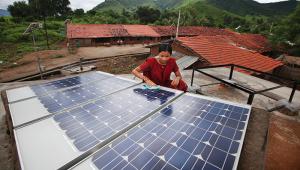In its winter economic forecast, published yesterday, the commission said that while the European economic recovery is expected to continue right across the bloc for 2016, 2017 and 2018, higher-than-usual uncertainty was clouding its optimism.
Valdis Dombrovskis, vice president for the euro and social dialogue, and Pierre Moscovici, commissioner for economic and financial affairs, urged nations to use all policy tools at their disposal to support growth and ensure that its benefits are felt by all amid heightened risks.
“With inflation picking up from low levels, we cannot expect current monetary stimulus to last forever,” added Dombrovskis, referring to the European Central Bank’s extraordinary monetary policy measures of the last few years.
“Countries with high deficit and debt levels should continue bringing them down to become more resilient to economic shocks,” he said.
The commission expects euro area GDP growth of 1.6% this year and 1.8% in 2018 – both figures marking a 0.1 percentage point upwards revision from the autumn forecast, following better-than-expected growth in the second half of 2016 and a “robust” start to the new year.
GDP growth across the EU as a whole is predicted to follow a similar pattern, with 1.8% growth anticipated both this year and next. In autumn, the commission had forecast just 1.6% growth this year, while its expectations for 2018 remain unchanged.
Inflation is set to get a substantial boost, the commission said. It expects an increase from 0.2% last year to 1.7% this year in the euro area, falling to 1.4% again in 2018. Across the EU, the commission predicts a rise from 0.3% in 2016 to 1.8% this year, and 1.7% in the next.
This remains short of the ECB’s target of close to but below 2% over the medium term. Mario Draghi, the bank’s president, has also indicated this will have to be the case across the whole euro area.
Meanwhile, both public debts and deficits, as a portion of GDP, are expected to fall in the next two years. The debt-to-GDP ratio is expected to diminish gradually, from 90.5% last year, to 90.4% this year and to 89.2% last year.
Across the euro area, the deficit is anticipated to decline from 1.7% in 2016 to 1.4% this year and next. The commission said this reflected lower spending on interest as a result of the exceptionally low interest rates set by the central bank.
Improvement in the labour market – a trend the commission expects will continue – is also a factor, as more people are paying taxes and making contributions, while fewer are receiving benefits.
This also supports private demand, which the commission said will be the main driver of growth, although this is expected to slow as inflation grows and hits purchasing power.
Amid an anticipated uptick in the global economy and low financing costs, the EU can expect some moderate growth in investment, the commission continued, but added its persistent weakness “casts doubt” over the sustainability of the recovery and the economy’s growth potential.
It also warned that the risks surrounding these projections are “exceptionally large”. These include uncertainties over the “still-to-be-clarified intentions” of the new US government headed by president Donald Trump, a series of key national elections in the EU and Brexit negotiations with the UK.
The commission also pointed to the potential consequences of high and rising debt in China. A
At analyst firm Capital Economics, Jessica Hinds, European economist, was less optimistic. She noted that figures on eurozone growth at the end of last year, published today, were not as positive as previously thought, some disappointing growth numbers had come out of Germany, Italy and France, and that strong domestic demand may have been offset by weak trade.
"What’s more, the outlook for early 2017 is far from positive. Not only do the weak hard data for December provide a poor base for Q1, but rising energy prices and political uncertainty are also likely to cause GDP growth to slow this year," she said.














